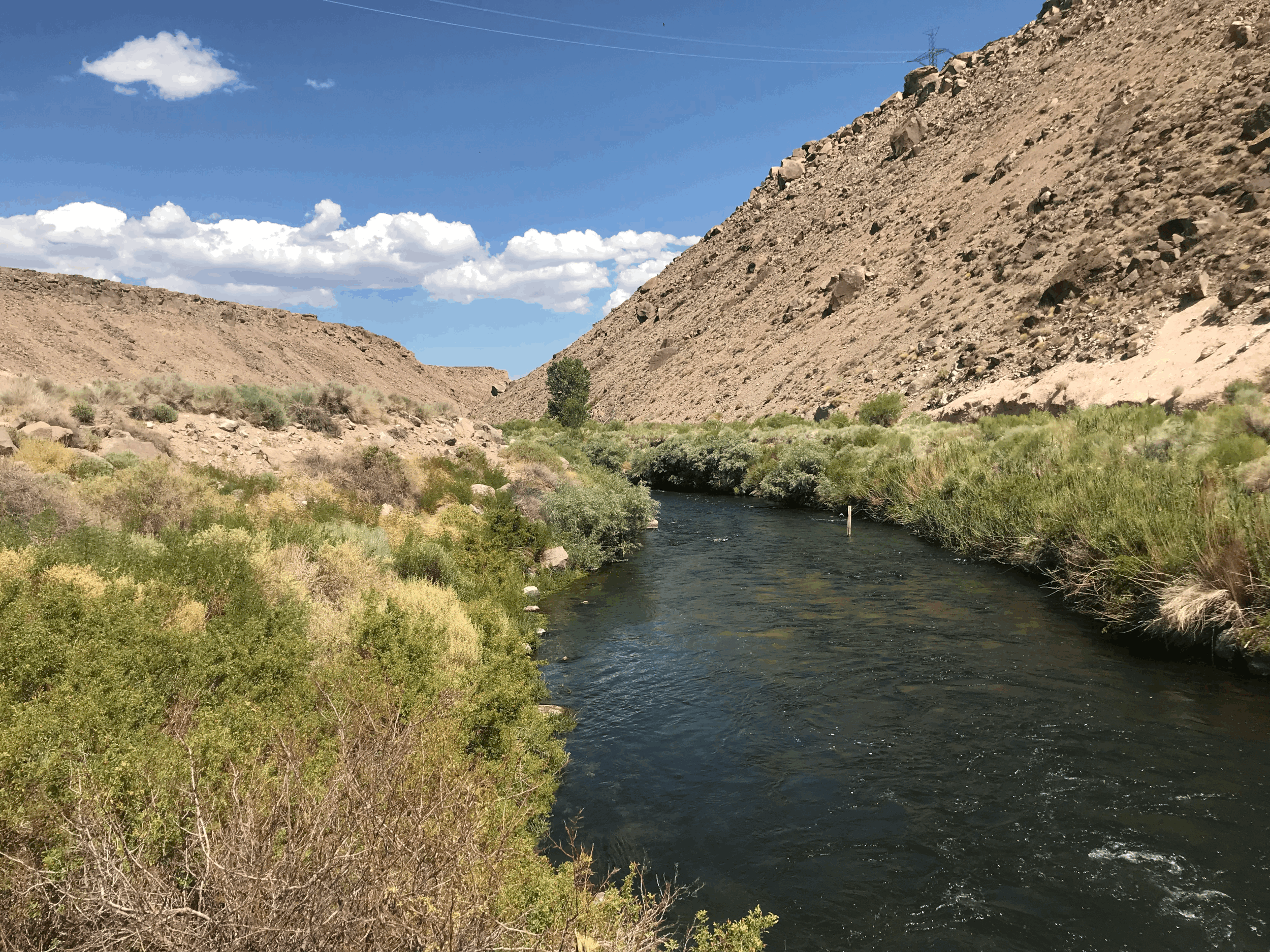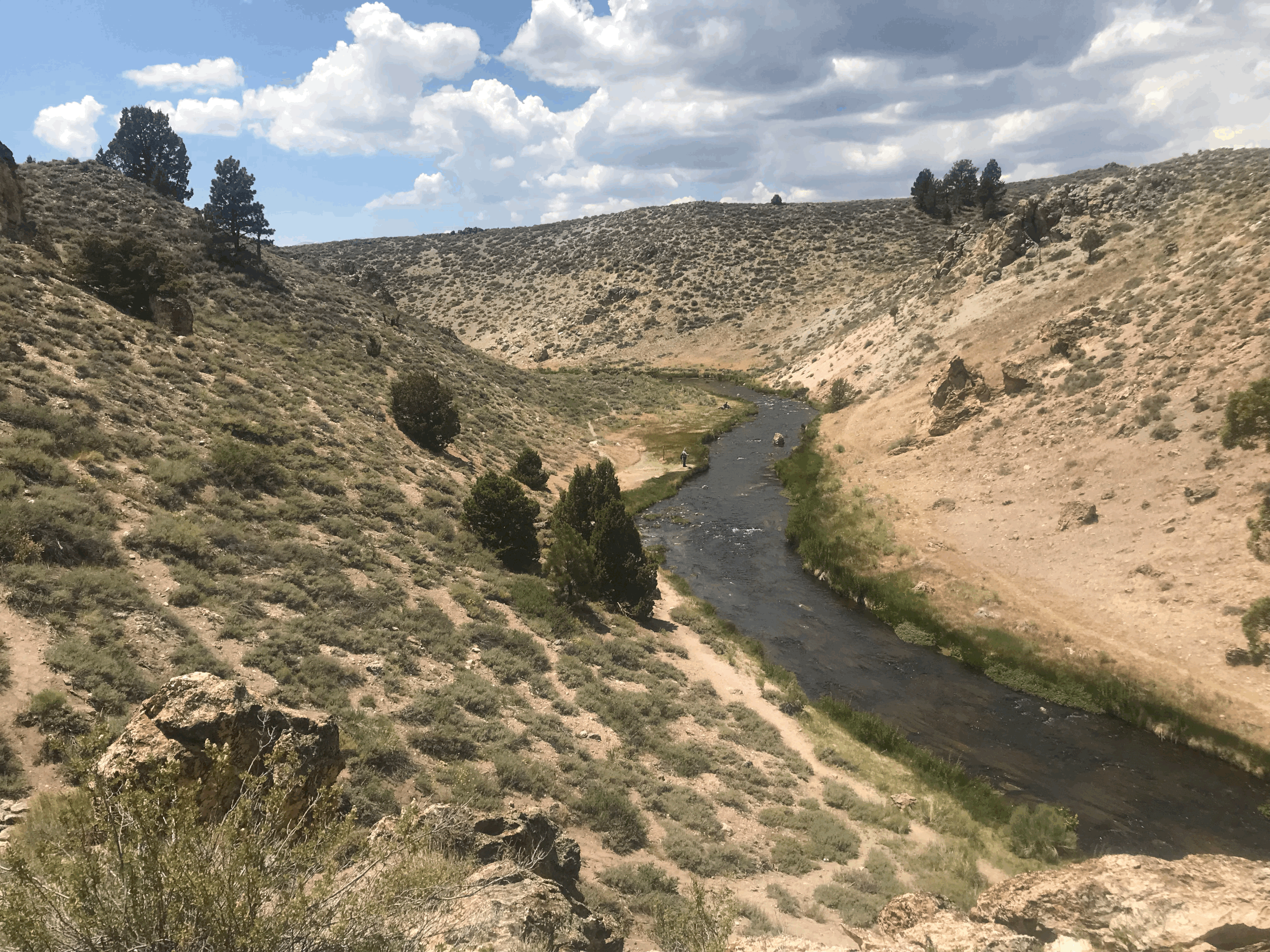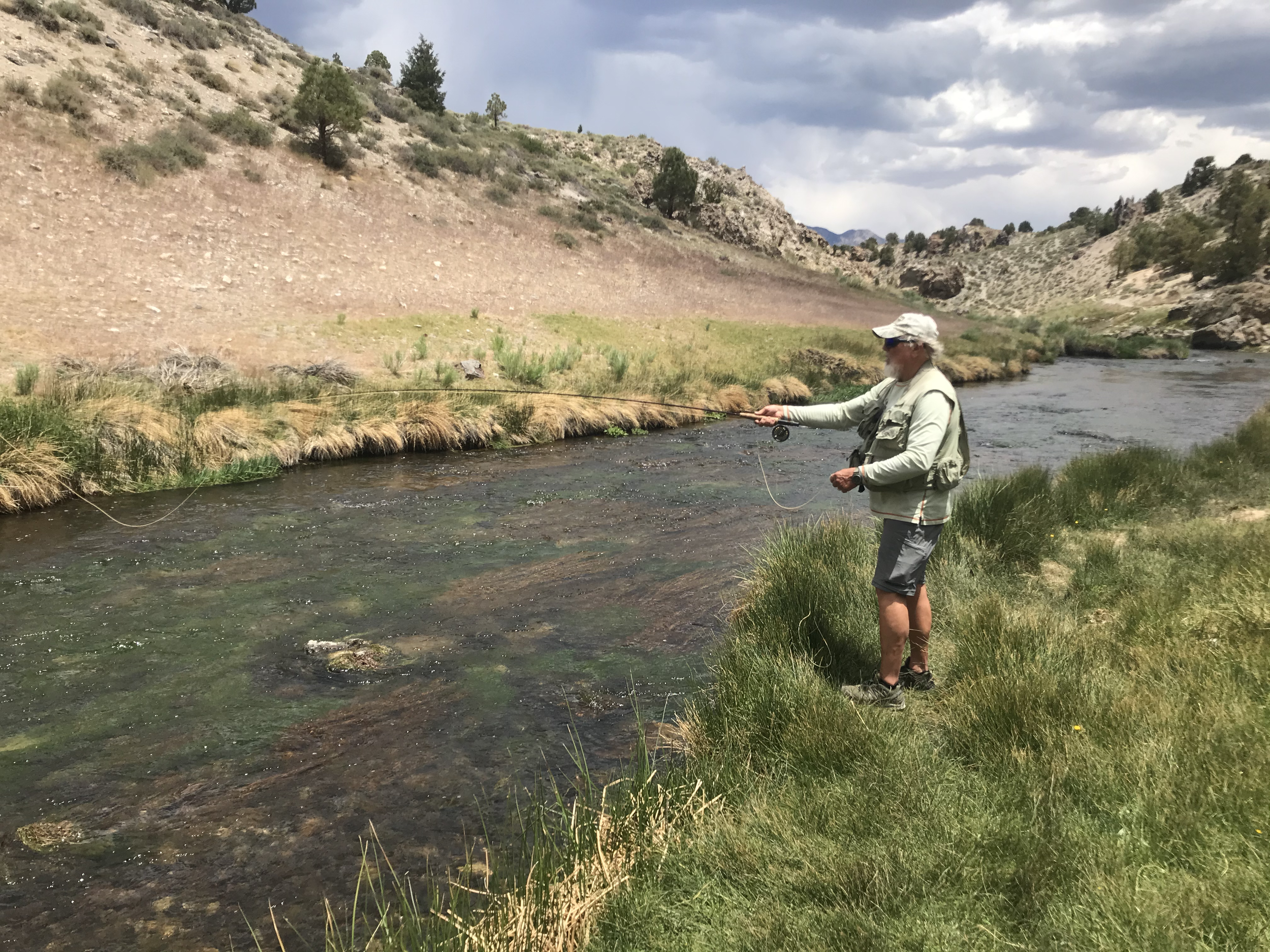Got through the heat wave at the beginning of the week with a few lightning caused fires in the Eastern Sierra. The 2000 acre Dexter Fire on the back side of Bald Mountain has been burning since Monday July 12. The 15 acre Glacier Fire between Glacier Lodge and Baker Creek in the Big Pine drainage area has been burning since Wednesday July 14. Day time temperatures are still hot in the Owens Valley and Long Valley area and fly fishers should be fishing early and late in the day.
Lower Owens River Wild Trout Section:
Euro Nymphing in the morning tell noon has been good with gold ribbed hare’s ear, stoner nymphs, Butano nymphs and brown or olive perdigons. Water flows have been at 225 CFS all week and is a perfect level to wade and fly fish the river. Water temperatures have been in the upper 50’s. Evening fly fishing has been good with Euro nymphs.
Euro nymphing the riffle into the pool produced brown trout for Bill Sidenfaden of Dana Point.
Hot Creek:
Interpretive Site:
Above normal temperatures has made fly fishers fish early and late in the day to find trout feeding on hatching mayflies and caddis. The weed beds are chocking the stream forcing fly fishers to fish the narrow slots between the weed beds or the few deep holes. Trico’s continue to offer good fly fishing in the mornings. Parachute trico’s and trico spinners in size 22 and 24 are producing trout on the surface. Evening caddis activity has been sporadic.
Key to success on the interpretative sight is to find areas not chocked with weeds where trout are actively feeding on trico’s in the morning.
Hot Creek Canyon Section:
Mornings have been offering the best fly fishing opportunities with hatches of trico’s and caddis buzzing around. Fishing a mayfly nymph under an Adams parachute has been productive. Caddis nymphs in cream and gray have been fooling the wild trout. The water levels are low and the weed beds are increasing forcing fly fishers to drift their flies in the narrow channels between the wed beds. It takes lots of casts to get a good drift. When you get the right drift you will be rewarded with trout.
Upper Owens River:
Above Benton Crossing Bridge:
Early mornings are offering fly fishers the best opportunities for fly fishing the upper Owens River. Morning hatches of may flies and caddis have been providing the trout with a consistent food source. Afternoon water temperatures are pushing the upper limits of safe catch and release fishing. Hoppers are starting to become active and fly fishers are fooling fish with parachute hoppers, Joe’s hoppers, and foam hoppers. Euro nymphing the river in the mornings has been producing trophy rainbows and brown trout.
A dry and dropper or a hopper and dropper is a great way to work the upper Owens River in the mornings before the water temperatures get too high.
Bishop Creek Canal Behind the Ford Dealer:
Owen Valley temperatures have been as high as 106. This makes for a hot mid-day of fly fishing. Best fishing has been early or late in the day. Nymphing continues to be the most productive method of fly fishing. Fishing a dry and dropper, a hopper and dropper or Euro nymphing has been productive. Fish with foam hoppers, royal Wulff’s, and Adams parachutes on top. For the nymph fish with bead head flash back gold ribbed hare’s ears, bead head flash back pheasant tail nymphs, Butano nymphs, stoner nymphs, and green/gold Prince nymphs.
The fast water sections of the canal is a great place to learn the techniques of Euro nymphing.
San Joaquin River:
There is a mandatory bus ride to access the San Joaquin River from Agnew Meadows to Reds Meadows. The river is low making wading through out the system easy. This is a prime spot to fish a dry and dropper. I like to fish a size 14 or 16 elk hair caddis, Adams parachute or Royal Wulff for the dry fly. For nymphs I use a size 16 bead head flash back gold ribbed hare’s ear, a size 18 bead head flash back pheasant tail nymph, or a size 14 copper or red copper John. There are wild rainbows, browns, brook trout, and hybrid golden trout from 8 to 10 inches that will take well placed flies. This is pocket water fishing requiring the fly fisher to accurately place the flies behind the structure in the river. Mosquitoes are abundant.
Fly fishers need accurate casts to place the fly behind the structure in the San Joaquin River.



































